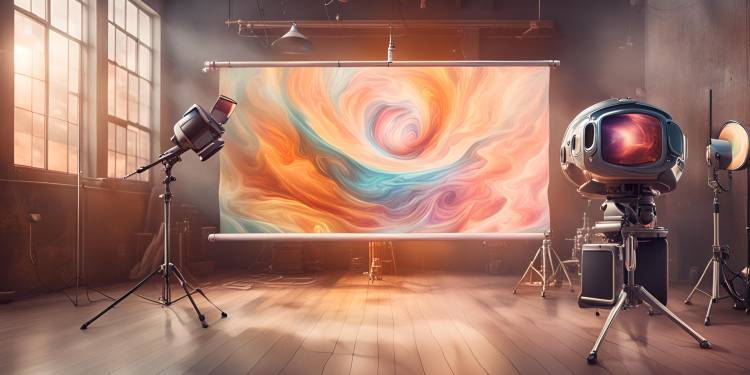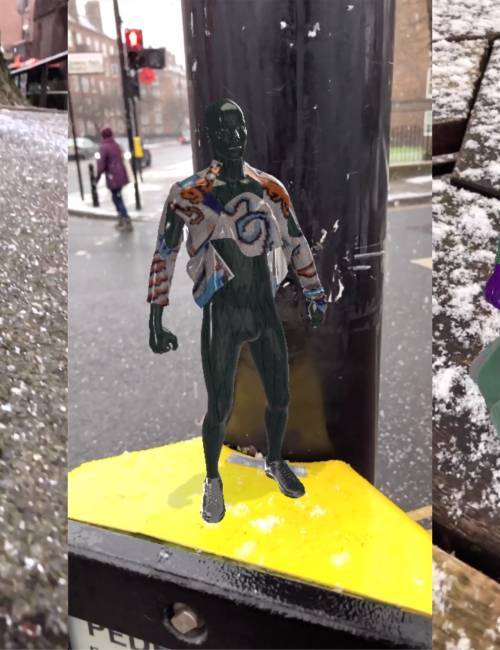The uncharted terrain of creativity in the age of AI

Debates surrounding the impact of technology are hardly new. The ancient Greek philosophers Socrates, Plato, and Aristotle had differing conceptions of techne to describe various notions of skill, such as craftsmanship, artistic practice, and rhetorical skills.
Today, we think of technology as defining objects, processes, and systems related to the practical applications of materials. Regardless of how impactful technological progress has been, the notion that human agency defines technology has remained a given.
Crisis of Authenticity
The explosion of so-called “intelligent” technologies, such as AI and machine learning, are not merely tools that have begun to disrupt dynamics of production, design, and labour in artistic fields, but are reframing the very question of creative agency and authorship.
Their facility for instantaneous content generation is based on complex algorithmic mechanisms. Such technologies seem to have taken the essence of the human creative drive and either released its potential from our organic limitations or formulated it into a kind of relentless simulation.
Either way, as these technologies have become more integrated into creative practices, they trigger a host of critical issues related to intellectual property, authenticity, and the erosion of human underpinning in the creative process.
Lev Manovich, digital theorist and artist, raised the question of AI creativity in a recent LinkedIn post. He said: “Do we actually want, or need, GenAI tools to be 'creative'? Or is it a myth? It seems to me that 99% of, let's say, Midjourney users are aiming at simulating the aesthetics of big-budget cinema, video games, or anime/manga, or 'fantasy' illustration.
In reality, neither artworks nor casual or aspiring users are aiming at radical creativity. Rather it’s about following existing codes, templates, and rules, with some variations and craftsmanship… following this logic, we can expect that what people want from their AI tools is mostly perfectly simulating genre conventions and constraints—but not generating the most obvious stereotypes either.”
If, as Manovich suggests, “radical creativity” is not possible through AI’s algorithmic formalism, perhaps the best we can hope for is a reflection on the tools and processes one is using in a critically disruptive way.
We don’t quite know the intentions of these technologies, but we can still try to define the parameters of their use, particularly by examining our own relationship to the technological future—what Don Ihde calls “mutual constitution.” We can do this through creative practice, using these tools but evaluating the implications of that use.
Ethical Considerations
A recent symposium led by Ravensbourne University London and the Media and Cultural Studies Association explored the intersection of creative practice and artificial intelligence (AI). The symposium reflected a critical moment in our understanding of how intelligent technologies like AI, large language models (LLMs), and algorithmic technology reshape creativity, raising profound ethical, philosophical, and practical questions.
During the symposium, we wanted to explore questions around ethics, the essence of the self in the digital age, and the paradoxes faced by creative practitioners who are adopting these technological advancements.
As AI systems become more sophisticated, they raise significant ethical questions. How do we ensure that AI-generated content is used responsibly? What are the implications for intellectual property rights when machines can create original works?
It was clear during the event that there is no easy solution. Not to mention the potential rupture in labour markets that will affect both “knowledge workers”, who’s key skill may have now have to be adaptation, and those who just experience the impact of new forms of human-machine interaction.
Also central to the event were philosophical questions about the nature of creativity and human subjectivity. Traditionally, creativity has been seen as a uniquely human trait, tied to consciousness and emotional depth.
However, AI's ability to replicate certain creative processes forces us to reconsider these assumptions. Are machines capable of genuine creativity, or are they merely mimicking human patterns? But isn’t that what we have done all along as humans? Might this be the most terrifying realisation, that we are making machines that do it faster, cheaper, and better than us?
Practical Implications
There are also immediate practical implications for the creative industries and, of course. The integration of AI into creative workflows has already begun to transform sectors such as film, music, and visual arts. Virtual production techniques, for instance, allow filmmakers to create entire worlds digitally, blurring the lines between reality and simulation. Similarly, AI-generated music and art challenge our perceptions of originality and artistic value.
On one hand, these technologies can be understood as enhancing creative capabilities, offering new tools for experimentation, innovation and indeed experience. Yet, their algorithmic logic potentially undermines the intuitive, the strange, the unique, indeed the imperfect.
As these digital technologies proliferate, their environmental impact becomes a pressing concern. The energy consumption of AI systems, the e-waste generated by electronic devices, and the carbon footprint of digital production processes are all issues that need to be addressed. Consideration of sustainable practice has not been at the forefront of thinking during this phase of technological evolution.
Not only as researchers but as educators we are grappling with student adoption of such technologies. It is vital to consider how to equip students with the skills and critical frameworks needed to navigate this evolving landscape. This involves not only technical proficiency but an understanding of the ethical, social, and philosophical implications of AI in creative practices.
This symposium was only the beginning of an ongoing conversation, the parameters of which are boundless. Without doubt there is hype around the advent of AI that has both its dystopian and utopian parts.
From the discussions at the symposium, it was hopeful to hear both pragmatic and nuanced conversations on this uncertain terrain and to engage with a range of work in which the question of creativity, collaboration and ethics were thoughtfully intertwined into technological defined practices.


